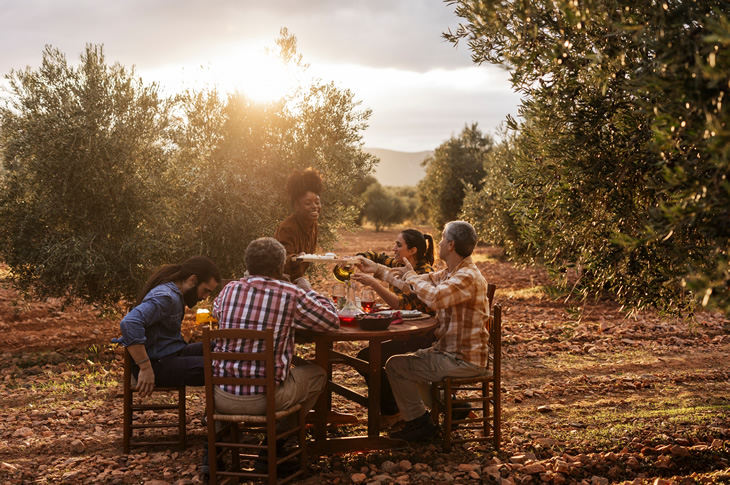Olive oil and culture: a thriving tourist attraction in Navarre
From tastings to picnics under the olive trees, discover how olive-oil tourism comes to life in the Ribera region
Navarre, in the north of Spain, is the northernmost traditional olive-growing region in Europe. In its fields, and especially from May to June, the olive blossoms herald the start of the perfect season for all those seeking rural experiences. Olive-oil tourism, or oleotourism, offers visitors much more than a product: it invites them to explore a culture, take part in tastings, tour olive mills, and discover the natural surroundings firsthand. In this region, a growing network of olive mills has opened their doors to visitors. Sites like the Hacienda Queiles (Monteagudo), Trujal Mendía (Arróniz), and Bodegas Nekeas (Añorbe) combine their oil-making expertise with warm hospitality, while some even offer rural accommodation for a complete immersive experience. One of the best-established examples can be found at Trujal Artajo in Tudela, where visitors are encouraged to explore the 250-hectare olive estate, participate in pairing workshops, learn the art of tasting, and sample almonds grown on site. The real highlight: picnics among the olive trees, with a dedicated motorhome area that has become particularly popular among European travelers.

Local events also serve as a key driver for oil tourism. Arróniz, considered Navarre’s olive-oil capital and home to the Ékolo Oil Museum, celebrates olive oil and toast every February on the Día de la Tostada (Day of the Toast), an event declared a Tourist-Interest Festival that brings in over 10,000 visitors. Meanwhile, interest in olive oil continues to grow; it’s no longer just about tasting, it’s about immersing yourself in the history and environment that brings this product to life. Here in Navarre, this ancient product has become a full sensory experience.

